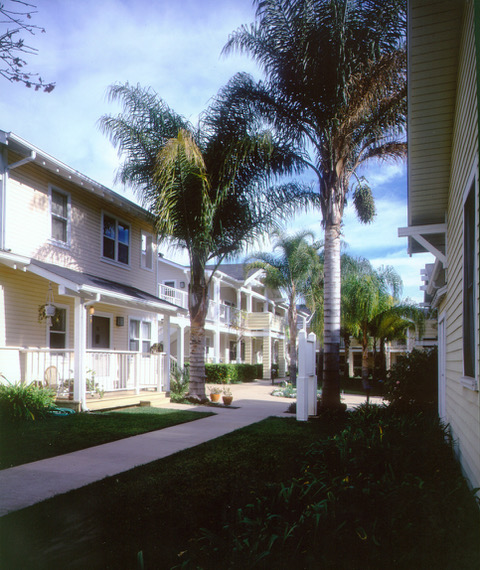How Did We Get to Santa Barbara’s Housing Crisis?
And What Can We Do About It?

Lately, we have been bombarded with news about the soaring cost of housing in the City of Santa Barbara. We know that a one-bedroom apartment in the city averages $3,000/month, and the median home price in Santa Barbara as of August 2023 was $2.1 million. A 2018 Purdue University study rated our city as the most expensive place in the U.S. to “be happy,” but many of us are not happy with the cost of housing.
Given our climate and our many attractive amenities, housing has always been relatively expensive here, but now it has reached crisis level. The current costs put housing out of reach not just for essential service workers, police and firefighters, nurses, and teachers, but even for health-care professionals like young doctors.
How Did We Get Here?
We believe these costs have risen from a confluence of forces:
- National trends: The L.A. Times says that rents all over the country are up 30 percent since 2018 and home prices in Los Angeles County are up 50 percent in the same period.
- Short-term rentals: The city suspects that there are 1,000-1,500 illegal short-term, less than 30-day, rentals. This is in addition to the many legal short-term rentals in the Coastal Zone and the many legal 30-day vacation rentals throughout the city, some owned by nonlocal investors. The rent gained from these properties is much higher than a local worker can pay, and each represents a loss to our available housing stock and drives up the cost of the remaining units.
- The arrival of tech employers: Over the last decade or two, Santa Barbara has become home to a sizeable number of technology companies. The employees of these companies are highly paid, and they have more money available to pay for housing, thus driving up the cost for others.
- Remote work: Many employees have found that they can work remotely from anywhere in the world, so why not live in Santa Barbara? Some have purchased homes or rented for long or short terms in Santa Barbara, increasing the pool of people chasing after Santa Barbara’s limited housing stock.
- Second homes: While Montecito has always been a community full of second homes owned by wealthy people from colder climates, Santa Barbara city is now a hot new location for second (and even third) homes. These buyers, absent for most of the year, push up the cost of single-family homes and reduce the available housing stock for local workers.
- Conversions of apartments to dormitories: Recently, entire apartment complexes near City College and UCSB have been bought by investment firms. These companies evict the local working tenants, do an upgrade, and rent to college students whose parents pay the increased rents. The evicted tenants are forced into a more restricted and expensive housing market.
What Can We Do About It?
This is an “all-hands-on-deck” time. Government agencies, employers, nonprofits, and voters must help. We need more housing, mainly affordable, for our workforce. Here are some ideas:
- Change short-term rentals: The city’s definition of short-term rental should be changed from 30 days to six or even 12 months, so more apartments and houses are available for those who make our lives possible here. The Coastal Commission should reconsider its policy of allowing short-term rentals, which is ruining the fabric of neighborhoods on the Mesa.
- Employer-developed housing: Cottage Hospital and UCSB provide off-market housing for their employees, and the Santa Barbara Unified School District has started the process. Other employers are helping their employees find affordable rentals and loaning money for down payments. Every large employer should consider a range of pathways for helping their employees find affordable housing.
- Student housing: UCSB and Westmont College provide housing for most of their students, and some Cal State and UC campuses have partnerships with their local community colleges for housing students. All public and private colleges should consider how they could provide student housing without burdening the community.
- Increased funding for affordable housing: We need a permanent, stable source of funding. It might come from an increased tourist bed tax or a tax on the sale of high-end houses, like seven states and Los Angeles County have.
- Free land: Nonprofit developers like our Housing Authority can build permanently affordable housing if they can make use of free land. Some government agencies have surplus land that can be made available for affordable housing. Surface parking lots owned by governments, public schools, or religious institutions can be sites for new affordable housing without losing the existing parking.
Moving Forward
While the housing crisis is bad now, it will likely get worse. There is a tsunami coming when current longtime homeowners retire or die and start selling their very expensive houses. A functioning city needs to house a diverse community, including essential service workers, police and firefighters, health care, and other professionals. Let’s start working hard now to prevent a time when only the wealthy can live in Santa Barbara.
Dennis Thompson is a Fellow of the American Institute of Architects (FAIA) and has designed institutional, residential, and low-income housing for over 40 years. He is presently volunteering with the Santa Barbara School District to help identify affordable housing strategies for teachers. Lois Phillips earned her doctoral degree at UCSB (’87), has been a strategic planning consultant to educational institutions, and lectures and writes about gender, leadership, messaging, and the art of public communication.




You must be logged in to post a comment.